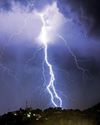
Part history lesson, part crime scene, Hew Locke's What Have We Here? is filled with beauty and horror. At the heart of the show, in the Great Court gallery of the British Museum in London, are looting and vandalism, the destruction of societies, the erasure of cultures and the enslavement of their peoples. All are embedded in the British Museum's own history and holdings. And that's without even touching on the frieze of sculptures from the Parthenon in Athens, and the sorry story of their acquisition, or to whom exactly many of the other objects in the museum might be returned, even if there was a will to do so.
Where are the pre-Columbian Caribbean Taino people now, whose hardwood spirit-figures of a birdman and of Boinayel the Rain Giver were found in a Jamaican cave in 1792? The sculptures entered the museum's collection, while the Taino were mostly wiped out, if not by murder then by diseases to which they had no immunity, after the arrival of the Europeans. "These sculptures," Locke writes, noting that the people who made them no longer exist, "are Jamaica's Elgin Marbles. They've become a symbol of collective memory, an idea of Jamaican nationhood."
Locke's terse little notes are placed beside many of the exhibits he has chosen from the collection. Working with his partner, curator Indra Khanna, and with the curators of the British Museum, Locke has done much more than set his own sculptures and images among works in the museum's collection. He has also borrowed from the royal collection, the British Library and elsewhere to make an exhibition that is deeply shocking. This is an exhibition that looks not only at works in the collection themselves, but also at what they once meant and the further meanings and resonances they have accrued in their journeys here. The show's title appears plain enough. After that, everything is complicated.
This story is from the {{IssueName}} edition of {{MagazineName}}.
Start your 7-day Magzter GOLD free trial to access thousands of curated premium stories, and 9,000+ magazines and newspapers.
Already a subscriber ? Sign In
This story is from the {{IssueName}} edition of {{MagazineName}}.
Start your 7-day Magzter GOLD free trial to access thousands of curated premium stories, and 9,000+ magazines and newspapers.
Already a subscriber? Sign In

If kids get protected from online harm, how about the rest of us?
The Australian government has proposed a ban on social media for all citizens under 16.

'It's not drought - it's looting'
Spain is increasingly either parched or flooded - and one group is profiting from these extremes: the thirsty multinational companies forcing angry citizens to pay for water in bottles.

Life in the grey Zone
Neonatal care has advanced so far that babies born as early as 21 weeks have survived. But is this type of care always the right thing to do?

Out of tune? Band Aid under fire for Africa tropes as it turns 40
Forty years ago this month, a group of pop stars gathered at a west London studio to record a single that would raise millions, inspire further starry projects, and ultimately change charity fundraising in the UK.

Deaths shine spotlight on risks of drinking on party trail
Vang Vieng is an unlikely party hub. Surrounded by striking limestone mountains and caves in central Laos, it morphed from a small farming town to a hedonistic tourist destination in the early 2000s.

Different strokes My strange and emotional week with an AI pet
Moflin can develop a personality and build a rapport with its owner - and doesn't need food or exercise. But is it comforting or alienating?

Strike zone Waking up to the rising threat of lightning
When the Barbados National Archives, home to one of the world's most significant collections of documents from the transatlantic slave trade, reported in June that it had been struck by lightning, it received sympathy and offers of support locally and internationally.

Cheap pints and sticky carpets: the old-school pub is back
In the Palm Tree pub, east London, barman Alf is taking only cash at the rattling 1960s till.

Brain gain Can a radical tax scheme convince the country's brightest to stay?
In the autumn of 2018, I moved to Lisbon for a month-long course at the Universidade .de Lisboa.

Fear and sympathy in small town divided over asylum camp
A year after anti-immigration riots, a site for asylum seekers faces hostility while some locals try to help new arrivals